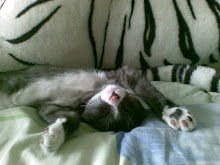Almost any experiment you construct will require a control. Sometimes a positive control is needed sometmes a negative one is needed. your descision in selecting our control would depend on how you want to analyze your results.
A positive control would be an experiment you know would give you a positive reading. for example if you want to test if the leaves have starch you would have to have a test tube(TT) with starch already inside and tested with iodine. Any experiment with the same results as your control would mean that your experimental tube underwent the same reaction as the control
A negative control would be an experiment in which you know would give you a negative reading. This is what we call a baseline reading . for example, a negative control for assignment 1 would be a TT with just dH2O inside. The whole point of a negative control would be to allow you to get a net reading (ie a reading due purely to your experiment)
example:
if you place a yeast-glucose suspension in a syringe and immerse it in a waterbath at 30 C and obtain 25 bubbles per min.
Then place a negative control containing boiled yeast and glucose in the same waterbath and count no. of bubbles. (maybe 2 bubbles per minute)
net production of bubbles would be 23 bubbles per minute. You can then speculate that te other 2 bubles are due to some error (depending on the Q you may have to identify source of error)
In assignment 1 you have to decide what methodology to use with an appropriate control.
For example if I want to examine amount of starch produced by weight, I may need some leaves in a situation in which starch cannot be produced.(maybe place leaf disks in the dark or in dH2O )
Next: Analysing your results
Thursday, December 17, 2009
Assignment 1: constructing a control
Posted by Uncommitted at 10:03 PM 0 comments
Labels: assignment 1
Thursday, December 3, 2009
Assignment 1

If for exampler we want to examine the effect of sugar concentration then the following things must be mentioned.
- Stock sugar solution was diluted to the required concentrations. for example to create a 5g/L solution from a 10 g/L solution, take 100ml stock and add equal volume of dH2O.
- State all your required sugar concentration. Make sure you select a minimum of 5 ranges if the question does not specify no. and make sure they are reasonable values. for example do not say you are going to select a 12g/L solution when your stock is only 10g/L
- Mention which variables you will keep constant. for example :
- all leaf discs were cut with a cork borer with a 1cm diameter
- apparatus was set up in a regulated water bath with an electronic thermocoupler
- apparatus was set up under a light source with constant light intensity (avoid saying under the sun as sunlight intensity can shift)
- mention no. of leaf discs per experiment eg. 30 or 100 (select values which are reasonable for the experiment) if large samples are readily available then use large samples
- time of experiment. how long does the experiment need to run. for something like this results could change very slowly over time so state something like 2 to 4 hrs.
next : designing a control
Posted by Uncommitted at 8:44 PM 0 comments
Assignment 1
Designing a hypothesis.
A hypothesis for any experiment has to be designed in accordance to the objective you are trying to achieve. In the case of this experiment you want to find out the effects of certain parameters on the ability of plants to produce starch.
Things to consider:
Should your hypothesis be very strict?
(eg. increasing glucose concentration would result in increased starch storage )the disadvantage to a strict hypothesis is that the possibility of your actual experiment disproving your hypothesis to be very high.
A generic hypothesis would be : Increasing glucose concentrations will have a direct effect on starch storage capacity.
Can your experiment be designed to prove or disprove your hypothesis?
Depending on the apparatus given you might want to consider revising your hypothesis.(eg. the effect of different carbon numbers in carbon source will affect the starch storage rate)if there is no apparatus or indication in measuring the variables, a hypotesis should not be designed in that way .
Similarly you want to make sure that the experiment you design will minimize errors or at least allow them to be controlled.
How many hypothesis per experiment?
Ideally one experiment should be constructed to prove or disprove only one hypothesis. So one experiment should be designed for every hypothesis. Each hypothesis should be written as a separate sentence. Bear in mind it is still possible to have a multiple hypotheses proven/ disproven by a single experiment. It really depends on the overall design of the experiment.
next....Designing an experiment
Posted by Uncommitted at 4:52 PM 0 comments








